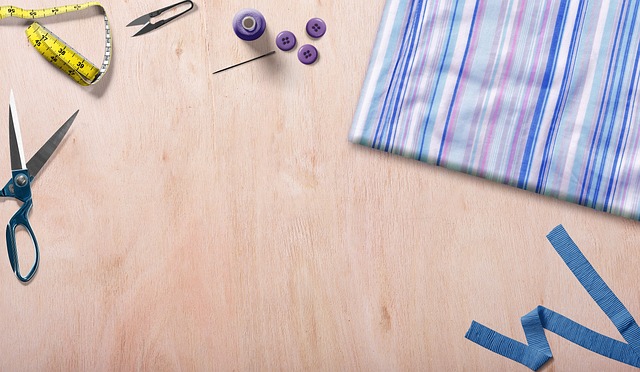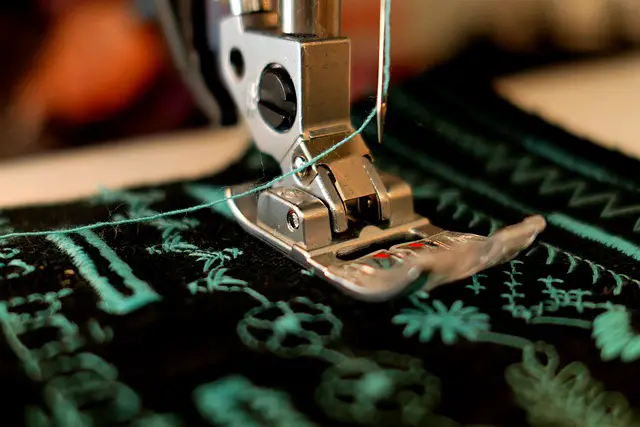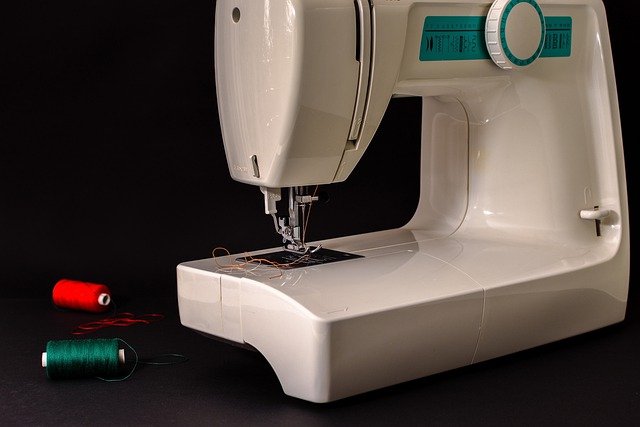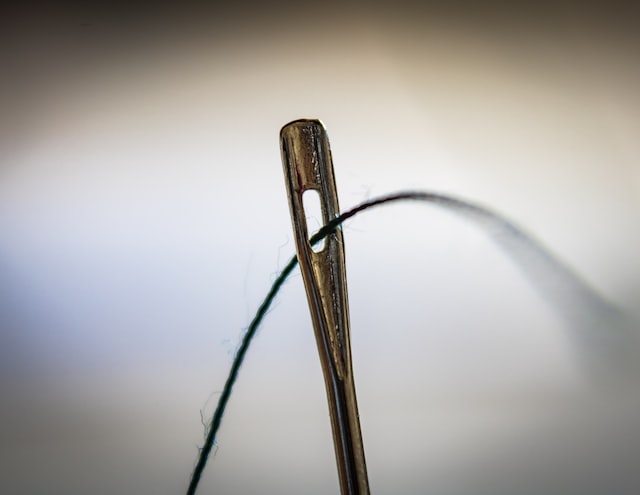How To Pack A Sewing Machine For A Flight? Detailed Guide

If you’re a sewing enthusiast planning to take your sewing machine with you on a flight, it’s essential to pack it properly to avoid any damage during transportation.
However, packing a sewing machine for a flight can be daunting, especially if this is your first time. In this blog post, we’ll guide you through packing your sewing machine for a flight step by step.
We’ll cover everything from the materials you’ll need to the techniques you’ll use to keep your sewing machine safe and secure during travel.
Whether you’re a seasoned traveler or a first-time flyer, our tips will help you pack your sewing machine like a pro and arrive at your destination with your machine intact and ready to use.
So, let’s get started!
Understand the Airline Regulations and Your Sewing Machine
Most airlines restrict what you can pack in your checked baggage. These restrictions are in place for the safety of both passengers and crew.
Sewing machines are generally allowed as checked baggage, but there are a few things you need to know before packing your machine.
The first thing to consider is the size and weight of your sewing machine. Most airlines have size and weight restrictions for checked baggage, so you must ensure your machine meets those requirements.
Consider how you’ll pack your machine. It’s important to protect your machine from damage, so make sure it’s well-padded and secure in its case.
The next thing to consider is the TSA guidelines for sewing machines. As per these guidelines, sewing machines should be stored in a locked hard-sided case.
You’ll also need to remove loose items from the machine, such as thread or fabric.
Once you’ve considered these factors, you’re ready to pack your sewing machine for a flight. Follow the airline’s restrictions and the TSA’s guidelines to ensure a safe and smooth flight.
Gather the Materials and Tools for Packing
When planning to take your sewing machine on a flight, you must ensure you have all the materials and tools you need to pack it properly. Here is a list of everything that you will need to gather before you start packing your sewing machine:

– A sturdy cardboard box that is big enough to fit your sewing machine
– Packing peanuts or other packing material
– Bubble wrap
– Tape
– A marker
How To Pack A Sewing Machine For A Flight?
If you’re a sewing enthusiast, you know your sewing machine is one of your most important tools. And if you’re planning to travel with your sewing machine, you’ll want to ensure it’s properly packed, so it doesn’t get damaged during the trip. Here’s a step-by-step guide to disassembling and packing your sewing machine for a flight:
1. Unplug your sewing machine from the power source and remove any attached accessories, such as the foot pedal, power cord, and dust cover.
2. Remove the needle and presser feet. Some sewing machines have removable plate that covers the feed dogs. If your machine has this plate, remove it as well.
3. Remove the bobbin case and empty the bobbin of any thread.
4. Take it out if your sewing machine has a removable throat plate.
5. Wrap the sewing machine head in a soft cloth or towel.
6. Place the machine head in a padded bag or box.
7. Place the accessories, such as the presser feet, power cord, and dust cover, in the bag or box with the sewing machine head.
8. Close the bag or box and secure it with tape.
9. Place the bag or box containing the sewing machine in your checked luggage.
Tips and Tricks for Safe and Smooth Transportation
Here are a few tips and tricks to help you safely and smoothly transport your sewing machine:
1. Choose the right type of case or bag.
There are a variety of cases and bags available specifically for sewing machines. Choose one that is sturdy and well-padded to protect your machine during transit.
2. Pack your machine properly.
Before packing your machine, ensure all moving parts are properly secured. This includes the needle, presser foot, and any other removable parts.
Once everything is in place, wrap your machine in a soft cloth and place it in the case or bag.
3. Protect your machine from extreme temperatures.
If you travel by plane, train, or car, ensure your machine is not exposed to extreme temperatures. This can damage the delicate parts of your machine.

4. Handle your machine with care.
Once you have packed your machine, handle it carefully to avoid any damage. When lifting it, support the entire machine, not just the handle.
By following these tips, you can ensure your machine will arrive at your destination safely and in good condition.
Will I pay extra fees to bring my sewing machine on a flight?
Most airlines will allow you to bring a sewing machine on a flight if it is properly packed and falls within the carry-on or checked baggage weight and size limits.
However, you may have to pay an oversize or overweight baggage fee if your sewing machine exceeds the standard luggage dimensions or weight limit.
It’s always a good idea to check with your airline in advance to find out their specific policies regarding sewing machines.
If you’re bringing a sewing machine on a flight, it’s important to be prepared for any potential fees or charges that may apply.
Doing your research in advance and packing your machine properly can help ensure a smooth and hassle-free trip.
What to Do If Your Sewing Machine Is Damaged During a Flight
If you’re a sewer, you know your sewing machine is your most important tool. It’s what you use to create all of your beautiful projects.
So, what do you do if your sewing machine is damaged during a flight?
First, don’t panic. Seeing your sewing machine damaged can be very upsetting, but staying calm and assessing the situation is important.
Next, take a look at the damage and see if it’s something that can be easily fixed. A trip to the hardware store can sometimes fix a loose screw or a broken piece of plastic.
However, if the damage is more serious, you must contact the airline and file a claim. Take plenty of photos of the damage and keep all your receipts.

The airline may reimburse you for the cost of repairs, or they may give you a voucher to use on a future flight.
No matter what, don’t let a damaged sewing machine ruin your trip. With some patience and quick thinking, you’ll return to sewing quickly.
What other items should I pack with my sewing machine for a flight?
You’ll need to pack a few other items to keep your machine safe and in good working order. Here’s a list of what you should bring with you when you travel with your sewing machine:
– A sewing machine case or bag. This will protect your machine from being damaged during transport.
– A can of compressed air. This will help to keep your machine clean and dust-free.
– A lint brush. This will help remove any lint or thread accumulating on your machine.
– A small screwdriver. This will be useful if you need to adjust your machine while away from home.
– A few spare sewing machine needles. A few extras is always a good idea if you lose or break a needle while traveling.
– A small sewing kit. This should include a seam ripper, scissors, and other basic sewing supplies.
By packing these items with your sewing machine, you’ll be sure to have everything you need to keep your machine running while you’re away from home.
Can I take sewing machine needles on a plane?
The short answer is yes, you can take sewing machine needles on a plane. However, there are a few things to keep in mind.
First, needles are considered a potential weapon by the TSA. This means that they will be subject to additional screening.
Be sure to pack your needles in a clear, plastic bag, so they are easy to spot and don’t get lost in your luggage.
Second, keep in mind that not all needles are created equal. Some needles, such as those used for quilting, are much larger and more difficult to pack.

If you need clarification on whether or not your needles will be allowed, it’s always best to check with the airline before packing them.
Finally, remember that needles are just one part of your sewing kit. Pack other essentials, such as thread, fabric scissors, and a seam ripper.
With a little planning, you can easily take your sewing kit on a plane and be ready to sew when you arrive at your destination.
Conclusion:
In conclusion, packing a sewing machine for a flight doesn’t have to be a stressful experience.
You can ensure your machine arrives safely and sound at your destination with the right materials and techniques.
Always double-check airline regulations regarding carry-on and checked baggage, and consider purchasing additional insurance for your sewing machine if necessary.
Following the steps outlined in this blog post, you can confidently pack your sewing machine and enjoy your travels, knowing that your machine is well-protected.
Happy sewing, and safe travels!



